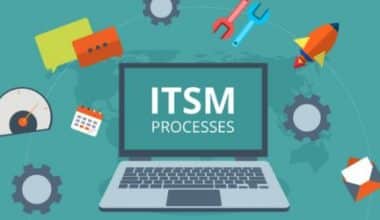Have you ever considered how much your employees’ job satisfaction affects the success of your company? Maintaining team happiness leads to increased productivity, motivation, and profitability.
Gallup reports that 20% of employees are engaged at work. Employee engagement is directly related to job satisfaction, which means that if employees are satisfied, they are more inclined to work hard at their jobs. So, what about the remaining 80%?
This article examines the various components of fostering high job satisfaction in the workplace. We also give advice on how to assess your company’s employee satisfaction using surveys & questions and then make changes based on the results.
What is Employee Satisfaction?
Employee satisfaction is a broad phrase used by the human resources business to indicate how satisfied or content employees are with aspects such as their jobs, employee experiences, and the organizations for which they work.
Employee satisfaction is one critical statistic that can assist assess an organization’s overall health, which is why many businesses conduct frequent surveys to gauge employee satisfaction and track satisfaction patterns over time. A high degree of satisfaction suggests that employees are pleased with how their employer treats them.
Employee satisfaction and employee engagement are frequently used interchangeably; however, while engagement is one-factor determining overall satisfaction (and the reverse is also somewhat true), the two are not the same. While satisfaction is vital for retention, it is not always a predictor of performance, whereas engagement—which, among other things, reflects an employee’s love for their work—is strongly related to production.
In an ideal world, satisfaction is the consequence of both financial aspects such as compensation and benefits as well as intangible elements such as involvement, recognition, and excellent leadership. If an organization fails to address both sides of the equation, they may find themselves with a complacent team of materially satisfied employees who are content to do only what is required to stay employed, or a team of highly engaged employees who are performing well while looking for new opportunities at companies more willing or able to meet their material needs.
Benefits of High Employee Satisfaction
Everyone desires to work that they will not dread doing every day. They want to work in a healthy workplace with pleasant management and coworkers, conduct meaningful work, and be well compensated.
You can earn these significant benefits if your company prioritizes employee work satisfaction:
#1. Reduced turnover
Employee satisfaction is associated with lower employee turnover. The more fulfilled they are at work, the more attached they are to their job, coworkers, and company. When you value your employees’ sentiments about their jobs and make an effort to address issues and boost their satisfaction, they will want to stay.
#2. Increased output
Employees that are happy with their jobs are more productive at work. They will have a sense of dedication that will motivate them to work hard in order to make a difference and achieve the company’s goals. Employees that are happy are less likely to miss work, thus they will accomplish more than employees who avoid work because they are anxious.
#3. A favorable corporate culture
Before applying for a job, 77% of respondents examine a company’s culture.
People are happier when they work toward company goals that correspond with their own views and priorities because they are doing meaningful work.
Your team members are more likely to feel connected to their job and coworkers if you foster a positive workplace culture that fosters purpose in your company’s mission.
#4. Loyalty
High employee satisfaction creates company loyalty. Employees who believe their occupations are meaningful and that their employers value them will work hard to support the company’s mission. Loyal employees are more likely to commend the organization, which improves the company’s image and attracts more job seekers and superior personnel.
Read Also: EMPLOYEE HANDBOOK: How To Create One
The Importance of Employee Satisfaction
All of the most essential elements impacting job satisfaction are under your and your company’s control. As a manager, you have the authority to make decisions and hold discussions that influence how your workers feel at work. Consider how the following management decisions may affect employee satisfaction.
#1. Working conditions
The key to employee satisfaction is a pleasant, secure atmosphere. When your team members arrive at work in a clean environment with a dedicated, comfy workspace, they will be happier.
The greatest work environments promote safety and provide well-maintained amenities for their staff. Your goal is to reduce tension and make your team members feel comfortable in the office.
Many businesses have moved to remote work, but you can still maintain a positive work atmosphere by keeping your company’s software and file systems organized and up to date. For work-from-home employees, technical glitches are a regular source of aggravation.
#2. Employee compensation and benefits
One of the most important job satisfaction elements is a competitive wage and benefits package. Employees want to feel appreciated. They will be more content with their job if their pay is equal to their work.
Human resource management can conduct frequent surveys to gauge employee satisfaction with the company’s pay and utilize the results to make changes.
#3. Treatment with dignity
Workplace relationships are a crucial aspect of employee satisfaction, and treating your staff with respect is how you build pleasant interactions. Positive or negative feedback is always respectful to the recipient.
According to statistics from the Officevibe Pulse Survey, 64% of employees believe the quality of their feedback should be improved. Employees desire supervisors who respect them and value their contributions. Employees are more likely to work hard and feel content with their jobs if you make an effort to respect them.
#4. Job stability
Many employees are concerned about their job security. No one wants to feel like their career is continually in jeopardy, and delivering clear reporting on your organization’s goals and achievements can help alleviate that anxiety.
It is also critical to praise your employees’ efforts when they excel. They will feel more content and safe in their position if you let them know you cherish their presence in the organization.
#5. Pathway to a Career
Employees are more satisfied with their jobs when they perceive they are on a defined career path. Offering training courses or reimbursing your employees for outside classes demonstrates that you value them enough to engage in their professional growth and provide them with opportunities to advance within your organization.
Read Also: EMPLOYEE BENEFITS: Types, Costs, and Benefits
What is the Difference Between Employee Satisfaction and Employee Engagement?
Employee satisfaction and employee engagement are concepts that are related but not interchangeable. Job satisfaction can be determined by assessing your team members’ feelings about their work and other areas of the firm.
Employee engagement is primarily concerned with your employees’ production. They do not necessarily produce a large volume of work; rather, they invest passion and energy into their work, commit to quality, and sincerely care about the company’s success. Increased job satisfaction leads to increased employee engagement, which leads to enhanced productivity, employee retention, and profitability.
9 Best Practices for Maintaining High Employee Satisfaction
#1. A Pleasant Working Environment
A pleasant work atmosphere has a huge impact on how employees feel. The work atmosphere is critical in keeping employees motivated. It has a huge impact on his or her professional life. It shows in their work and helps them stay positive throughout the day.
A positive work environment includes more than just the organizational structure. It refers to an employee’s entire experience with his or her coworkers, direct superiors, and business culture.
Create a positive working atmosphere by-
- Communication that is open
- Creating trust
- Developing positive working relationships
- Listening to others and supporting equal opportunity
#2. Feedback
We all require and crave feedback, and your employees are no exception.
Feedback is essential for employee satisfaction, yet most managers are unsure how to provide it. Employees are uncertain about the work and effort they are putting in when there is a lack of employee feedback. Human psychology is complex, and various people can interpret the same message or discussion.
Managers must consequently master the art of providing feedback. The benefits of feedback in the workplace are enormous. It can foster trust, increase employee satisfaction, keep staff motivated, and reduce turnover.
The best approaches to providing constructive feedback are;
- The good intention.
- It should be productive.
- It must be authentic.
- Don’t put it off; provide feedback right away.
#3. Rewarding and Recognizing
According to a poll conducted by OfficeTeam, 66% of employees said they would “likely leave their job if they did not feel appreciated.”
Each of us has various skill sets that we use consciously or unconsciously at work. It is thus beneficial for anyone to be recognized for the application of these skills. Employee morale, productivity, and total employee satisfaction or job satisfaction improve when employees are rewarded and recognized for their efforts.
Organizations frequently overlook this psychological aspect. Employee motivation is maintained by periodically appreciating and honoring staff. This motivates people to strive for excellence and to outperform themselves. You can also provide your staff with significant incentives and perks to increase their morale and job satisfaction.
Related: EMPLOYEE REWARDS: Types, Benefits, and Examples
#4. Employee Satisfaction and Work-Life Balance
Employees can balance their professional and personal lives with the aid of work-life balance. Balancing work and life in today’s society is difficult and, at times, exhausting.
Employees are preoccupied with many parts of their personal and professional lives. And this is critical to their satisfaction and employee happiness. Long, tight work schedules and an abundance of work make it tough for them to balance them.
As a result, management may assist its people in achieving a work-life balance. Here are some concrete steps to take:
- Launching work-life balance initiatives
- Having one-on-one encounters
- To offer flexible working hours
- Allowing them enough time for rest and recreation
#5. Employee Involvement and Engagement
Employee satisfaction increases when you include and engage your employees. Teams that collaborate with participation are happier and more pleased. Making staff completely involved is the best approach to motivate them. To listen to them when they are in need. To show them that they are equally important and that their contributions and hard work are always valued.
Work can be stressful and time-consuming at times. When you intentionally include and engage your staff, you reduce employee turnover and increase employee satisfaction.
#6. Improve Employee Skills
One of the characteristics of employee satisfaction is assisting employees in developing their skill sets. Allowing your staff to grow their talents improves their job satisfaction and increases work efficiency. This also shows that, in addition to your organization’s success, you are concerned about their professional development.
Evaluating if employees desire to learn something new or require specialized training is always a smart idea. Employee dissatisfaction is frequently caused by a lack of this management technique. Because they believe they have nothing else to learn.
#7. Employee Satisfaction should be evaluated and measured.
Many small and large businesses perform biannual or annual employee satisfaction surveys. They posted questions about teamwork, feedback, information, work-life balance, work relationships, self-evaluation, and other topics. Unless it becomes monotonous or complacent, this is a wonderful practice. Because work cultures differ from one organization to the next, employee satisfaction surveys can be tailored accordingly.
Assume management can set up an employee suggestion box so employees may voice their concerns anonymously. Employees can offer basic comments or write about anything that troubles them.
One-on-one reviews are another type of evaluation procedure. This could be a highly efficient way to learn about employee unhappiness and its characteristics. Management would use this method to determine whether or not they are content with their positions. This would allow employees to express their dissatisfaction, aspirations, and goals. This would increase employee satisfaction and engagement, as well as what they expect from the firm.
#8. Employee Well-being
The adage “health is wealth” is often overused, yet it is true. Employers who do not prioritize their employees’ physical, emotional, psychological, and financial well-being create ineffective teams. It is critical to create a work culture that caters to the demands of the employees’ well-being.
Employees who are healthy and stress-free perform better and have a greater sense of responsibility for their jobs. The sense of security keeps people interested and committed. Employers must therefore provide them with corporate wellness programs or sessions, as well as monitor their conduct, in order to build a positive culture.
#9. Goals and objectives must be clearly specified.
You may have the best team in the world working for you, but if you don’t have goals and objectives in place, you’ll gradually destroy their passion. Your team requires guidance throughout their work-life cycle.
Employee satisfaction is impacted when an organization fails to give clear objectives or company values. Employees labor for more than just a wage. They also require direction and a sense of purpose to keep them motivated at work for their satisfaction. After all, we all want to accomplish important work and make a difference.
Read Also: EMPLOYEE RELATIONS: Definition, Examples, and Best Practices
How Do You Assess Employee Job Satisfaction?
Use numerous measuring methodologies to gain the most accurate picture of your employees’ satisfaction levels.
Employee Satisfaction Surveys
Use employee satisfaction surveys to learn what your employees like and dislike about working for your organization. Use a mix of quantitative and qualitative questions to make the employee satisfaction surveys simple to complete while yet providing useful information to your HR department.
“How satisfied are you with the feedback you receive at work?” may be a quantitative question.” ask employees to rate their level of satisfaction on a scale of 1 (very dissatisfied) to 5 (extremely satisfied). Once all surveys have been submitted, divide the total number of replies collected by the sum of affirmative responses (responses from 4-5). Then multiply the outcome by 100. Your satisfied employees are represented by the percentage. Compare the results over time to evaluate if customer satisfaction improves.
In addition, ask qualitative employee satisfaction questions like, “What do you like (and dislike) most about our feedback system?” “This enables respondents to elaborate on their ratings and tell you exactly what needs to be improved.”
eNPS® (employee Net Promoter Score®)
Employee Net Promoter Score® is a straightforward metric that asks a single question: “How likely are you to recommend this company to other job seekers?” Recipients rate their likelihood on a scale of 1 (very improbable) to 5 (highly likely).
eNPS® measures employee loyalty to your company, which is a sign of job satisfaction.
Divide replies into three groups—promoters (those who replied 4 or 5), passives (those who answered 3), and detractors (those who answered 2 or 1)—and apply the formula to calculate eNPS®
You will be given a value between -100 and 100. A score greater than zero indicates that the overall sentiment is positive. According to a Nailted survey, the average eNPS® score for tech organizations is 35.
How Do You Compose Effective Employee Satisfaction Survey Questions?
It can be tough to create a survey to assess employee satisfaction.
Your employee engagement survey should be aligned with the objective of your firm and have a clear aim that employees can identify with. Here are five simple steps you can do to improve your employee satisfaction surveys questions:
- Avoid using corporate jargon and instead use concise, clear English.
- Communicate any issues or actions to the entire organization.
- Shorter pulse surveys are preferable to longer ones.
- Pulse surveys perform best when conducted on a regular basis, such as weekly, bimonthly, or monthly.
- Ensure that your managers are aware of their team’s responses.
Should Employee Satisfaction Surveys Be Kept Private?
Employees need to feel reassured that their responses won’t be used against them in order to encourage them to submit open and honest feedback. True anonymity is difficult to achieve because comments frequently contain identifiable information. Confidentiality, on the other hand, should be at the heart of survey software.
Conclusion
To boost employee satisfaction and engagement, organizations must be aware of these strategies. Employee satisfaction will always put their best foot forward and work towards the bottom line. When you understand what reduces employee satisfaction and assist your employees in providing the finest employee experience. That’s when you put together a team to help you reach your goals.
Related Articles
- EMPLOYEE ENGAGEMENT TOOLS: How It Works, Best and Free Tools
- EMPLOYEE ENGAGEMENT: Ideas, Activities & Importance
- CUSTOMER EXPERIENCE: Management, How to Improve, Model & Importance
- How To Leverage Digital Customer Experience To Drive Business Growth






